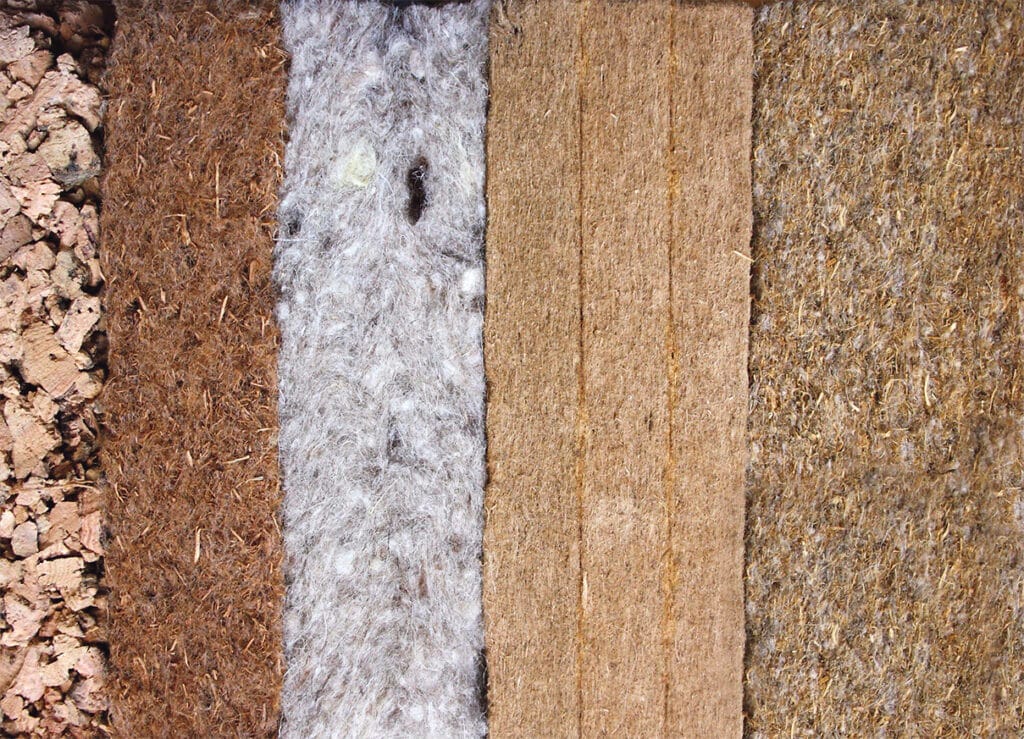
RetroFit
Xavier Dubuisson is an engineer with 25 years experience in the field of sustainable energy in Ireland and internationally. The founder and CEO at RetroKit, a start-up dedicated to upscaling home energy upgrades with innovative digital solutions and one of the partners in the CHERIS project, Xavier has many years of experience helping homeowners make the right decisions when upgrading or building low energy homes.

It’s great to be writing this with the sun shining and a bit of warmth in the air. Pat from Sherkin Island kindly shared his story with us last month and it sparked a lot of interest in the topic of using different materials for retrofitting especially in his case when you are dealing with older stone buildings. So I wanted to take a look into a few options around natural insulation.
It is of particular interest to me as my own house is a stone building (typical Irish farmhouse) – in fact the walls are approximately two feet thick made from stone and rubble, which is typical of any home built before the 1950s in rural Ireland. It was renovated in the 1990s and an extension was added and the external walls were all clad with a cement based render. I have spoken before about the different steps we have taken to bring our home from a low BER up to an A3. A key part of it was to insulate and improve the airtightness of fabric of the dwelling as much as we could, in order to reduce heat losses.
The low hanging fruit was to raise the insulation of the attics from a patchy 100mm layer of standard insulation between the rafters to approximately 400mm layer. We used an amazing natural material manufactured in Cork by Ecocel called cellulose insulation. Cellulose insulation is made from recycled newspapers and was sprayed using pressure into attic spaces and to fill up studded walls. It’s a great ‘circular’ sustainable solution with a very low embodied carbon with equivalent insulation properties and the added benefits of reducing air leakage from the attic into the house and being an excellent sound barrier. We also pumped the cavity walls of the back extension with silver polystyrene beads, a standard solution nowadays, also available from a number of companies in and around Cork
The next big job will be to insulate the exterior stone walls in the old part of the house. These have been plastered with a cement based plaster so when we do go to insulate the house, like Pat on Sherkin, we’ll be removing that layer and replacing it with some type of external insulation. There are an increasing number of natural options for this as well. One is adding a layer of lime-based insulated plaster including cork for example. Another one is to use external insulation that comes in rigid, dense sheets, often made from wood fibre or hemp, which are then rendered on the outside with a lime-based render. The key requirement is that the system and materials system lets vapour pass through and actively transports moisture from the structure of the building helping the wall and building dry out. This regulates humidity and prevents condensation and mould growth.
One of the bigger jobs we did at home was to remove the Stanley oil burning range and the very chimney and open the wall behind it to install e large glass doors which look into the garden. It was mainly because it was the south facing wall and we wanted to bring warmth and light from the sun into our home. It is also an added bonus that we can now look out onto our garden..
It is amazing how even a few hours of sunlight a day through those windows heats up the space. Traditionally, Irish Homes were built to shelter us from the wind and the rain and with single glazed windows, usually small ones. I sometimes wonder how life was different in those days… what it was like living in darkness when artificial light was not common. I guess a key thing was that they were outdoors a lot more at the time.So it got me thinking about how we can tap into natural energy – in this case the sun and the role of modern glazing to bring daylight and solar heat while minimising heat losses significantly compared to old, single glazed windows. The final piece of the jigsaw will be to replace our old windows (currently PVC double glazed windows – installed around 1995) with quality triple glazed windows and then to wrap the house with insulation from the outside.
If you’d like to explore further solutions for older buildings, the Department of Housing, Local Government and Heritage has published an excellent guide called ‘Improving Energy Efficiency in Traditional Buildings. Guidance for Specifiers and Installers’ available online.
Cheris Project
The CHERIS project is drawing to an end as its final date is March 31.
We are currently evaluating the project from the mentor and clinic attendees point of view. The feedback has been very positive.with 100 per cent attendees recommending the clinic. We will be reflecting about what we have learned from this project and how we can build on it to continue the mission to help accelerate the decarbonisation of houses in West Cork.
More on the key takeaways next month!
This was a pilot project funded through the Community Climate Action Fund. We are now preparing lots of materials so that other groups around the country can learn from our experience and replicate it in their own community.
Keep an eye on the CHERIS website for more updates.
Tidy Towns Rosscarbery organising a home energy upgrade event
Rosscarbery Tidy Towns are organising an event for the public around home energy upgrades on April 12, 7-9pm, at the Celtic Ross Hotel in Rosscarbery. The event is for people who want to take action and will provide information about upgrades, the CHERIS project, SEAI grants and a chance to meet with some of the contractors, BER assessors and suppliers working in West Cork.
There are limited spaces. If you are interested in taking part in a 121 clinic with our CHERIS mentors. Please email cheris@ludgate.ie.to register your interest.


